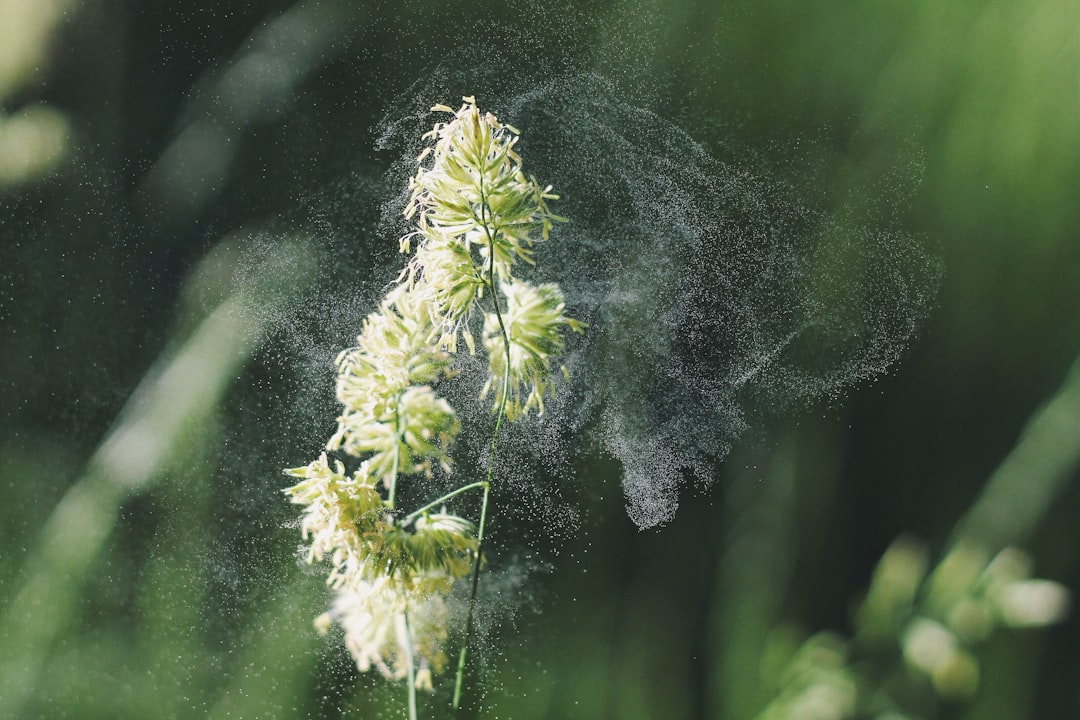Pollen vs. Spore
What's the Difference?
Pollen and spores are both reproductive structures found in plants, but they differ in their size, function, and mode of dispersal. Pollen grains are tiny, lightweight structures produced by the male reproductive organs of flowering plants. They contain the male gametes and are responsible for fertilizing the female reproductive organs. Pollen is typically dispersed by wind, insects, or other animals. On the other hand, spores are single-celled structures produced by various plants, fungi, and some algae. They serve as a means of reproduction and dispersal, allowing the organism to colonize new areas. Spores are usually smaller than pollen grains and can be dispersed by wind, water, or other means depending on the species. Overall, while both pollen and spores play crucial roles in plant reproduction, they differ in size, function, and dispersal mechanisms.
Comparison

| Attribute | Pollen | Spore |
|---|---|---|
| Definition | Microscopic grains containing male gametophytes of seed plants | Reproductive cells produced by fungi, plants, and some protists |
| Size | Generally larger than spores | Generally smaller than pollen |
| Function | Carry male gametes to female reproductive structures for fertilization | Enable reproduction and dispersal of organisms |
| Produced by | Seed plants (angiosperms and gymnosperms) | Fungi, plants, and some protists |
| Structure | Consists of a tough outer wall and a reproductive cell inside | Varies depending on the organism, can have a single or multiple cells |
| Dispersal | Primarily dispersed by wind, water, or animals | Dispersed by wind, water, or other means depending on the organism |
| Role in reproduction | Male gametophyte that fertilizes the female gametophyte | Can be male or female gametophytes, involved in sexual reproduction |
| Found in | Flowering plants, conifers, and other seed plants | Fungi, mosses, ferns, algae, and some other plants |

Further Detail
Introduction
Pollen and spores are both reproductive structures found in plants, but they differ in various aspects. Understanding their attributes is crucial for comprehending the reproductive strategies employed by different plant species. In this article, we will explore the characteristics of pollen and spores, highlighting their functions, structures, dispersal mechanisms, and roles in plant reproduction.
Function
Pollen and spores serve distinct functions in the reproductive processes of plants. Pollen grains are male gametophytes, responsible for delivering sperm cells to the female reproductive organs of plants. They play a vital role in fertilization, ensuring the transfer of genetic material from the male to the female gametophyte. On the other hand, spores are reproductive structures that give rise to gametophytes. They can be either male or female, and their primary function is to initiate the development of new individuals through asexual reproduction or sexual reproduction in some plant groups.
Structure
Pollen grains and spores exhibit distinct structural characteristics. Pollen grains are typically larger than spores and have a complex structure. They consist of a tough outer layer called the exine, which protects the genetic material inside. The exine often possesses intricate patterns, ridges, or spines, which aid in pollen identification and attachment to pollinators. In contrast, spores are usually smaller and have a simpler structure. They possess a single protective layer called the sporopollenin wall, which shields the genetic material during dispersal and germination.
Dispersal Mechanism
Pollen and spores employ different mechanisms for dispersal, ensuring their successful transport to suitable environments. Pollen grains are primarily dispersed by various vectors, including wind, water, insects, birds, and mammals. Some plants produce copious amounts of lightweight pollen grains that are easily carried by the wind, while others rely on specific pollinators for transport. In contrast, spores are typically dispersed through air currents. They are lightweight and equipped with structures such as wings or hairs that aid in their dispersal over long distances. Some spores may also be dispersed by water or attached to animals.
Reproductive Role
Pollen and spores play different roles in plant reproduction. Pollen grains are directly involved in sexual reproduction, as they carry the male gametes required for fertilization. They are produced by the anthers of the flower and must reach the stigma of the same or another flower to achieve successful pollination. Once on the stigma, the pollen grain germinates, forming a pollen tube that grows down to the ovary, allowing the sperm cells to reach the ovules. In contrast, spores are involved in the initial stages of plant reproduction. They germinate to form gametophytes, which produce gametes necessary for fertilization. In some plant groups, the gametophytes are independent and can develop into new individuals through asexual reproduction.
Role in Plant Diversity
Pollen and spores contribute to the incredible diversity of plant species. Pollen allows for cross-pollination, facilitating the exchange of genetic material between different individuals and promoting genetic diversity within populations. This genetic diversity is crucial for the adaptation and survival of plant species in changing environments. Spores, on the other hand, contribute to the dispersal and colonization of new habitats. They enable plants to reproduce asexually, producing genetically identical offspring that can quickly colonize new areas and exploit available resources. This asexual reproduction through spores is particularly advantageous in environments where pollinators are scarce or unreliable.
Conclusion
In conclusion, pollen and spores are essential reproductive structures in plants, each with its unique attributes. Pollen grains serve as male gametophytes, facilitating the transfer of sperm cells for fertilization, while spores give rise to gametophytes and initiate the development of new individuals. They differ in structure, dispersal mechanisms, reproductive roles, and contributions to plant diversity. Understanding the characteristics of pollen and spores provides valuable insights into the reproductive strategies employed by plants and their ability to adapt and thrive in diverse environments.
Comparisons may contain inaccurate information about people, places, or facts. Please report any issues.